ee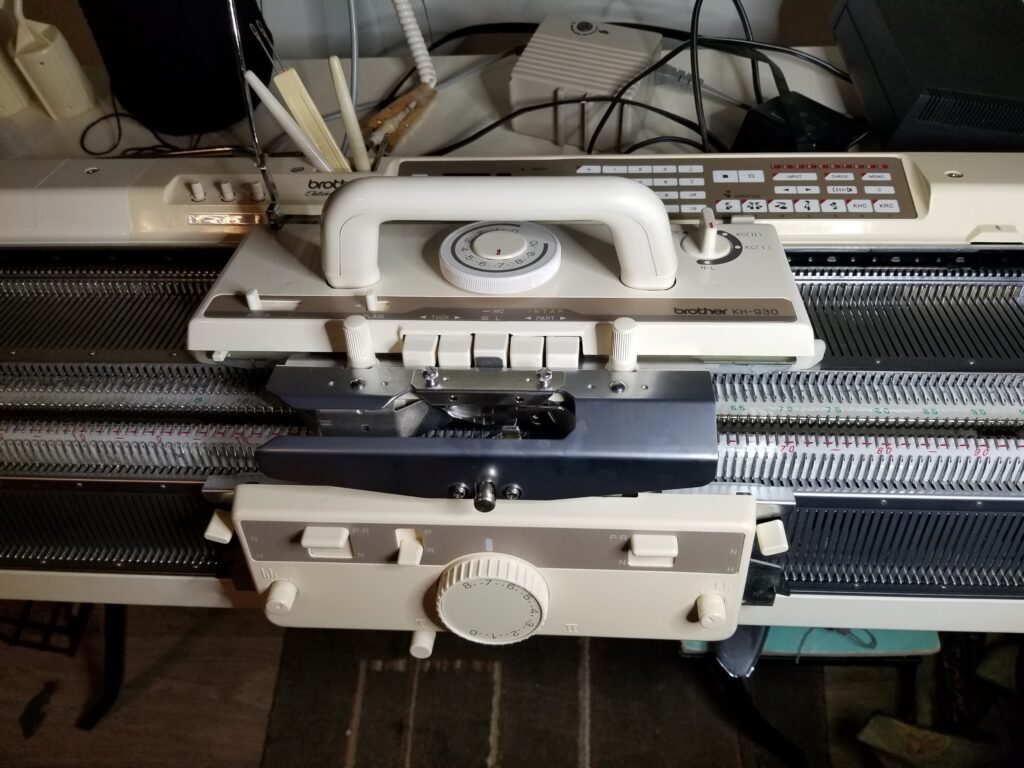
I just finished restoring this Brother 930 Knitting Machine and wow is it ever a beautiful machine. It came with a tilt-table and which is amazing to have. With a tilt-table, I can leave the ribber on the machine but when I’m not using it, adjust it so the main bed sits flat. Then when I need the ribber, I just adjust it back so the main bed and ribber are at the correct tilt.
When the first owner actually used her machine…
The first owner took such good care of her machine. It was a pleasure to clean it up and restore it to working condition. She kept her machine out of direct sunlight and covered it when she wasn’t using it. This prevented the plastics from yellowing and kept out the worst of the dust once the first owner was no longer able to use it.
Secondly because she knew how to use the machine the ribber mounted to the main bed at exactly the correct tolerances on the first try. When I cleaned and replaced all 400 or so needles (200 for each bed), I only needed to replace one needle. My first machine, a Singer 700, required 50 new needles on each bed to knit and probably still needs more if I want to knit the full bed.
Of course the sponge bar needed a new sponge. The sponge deteriorates over time and no longer keeps the needles in their proper position. But that happens no matter how well you care for your machine.
I published a rather lengthy video on the cleaning process.
Or you can just follow along below.
The Main Carriage
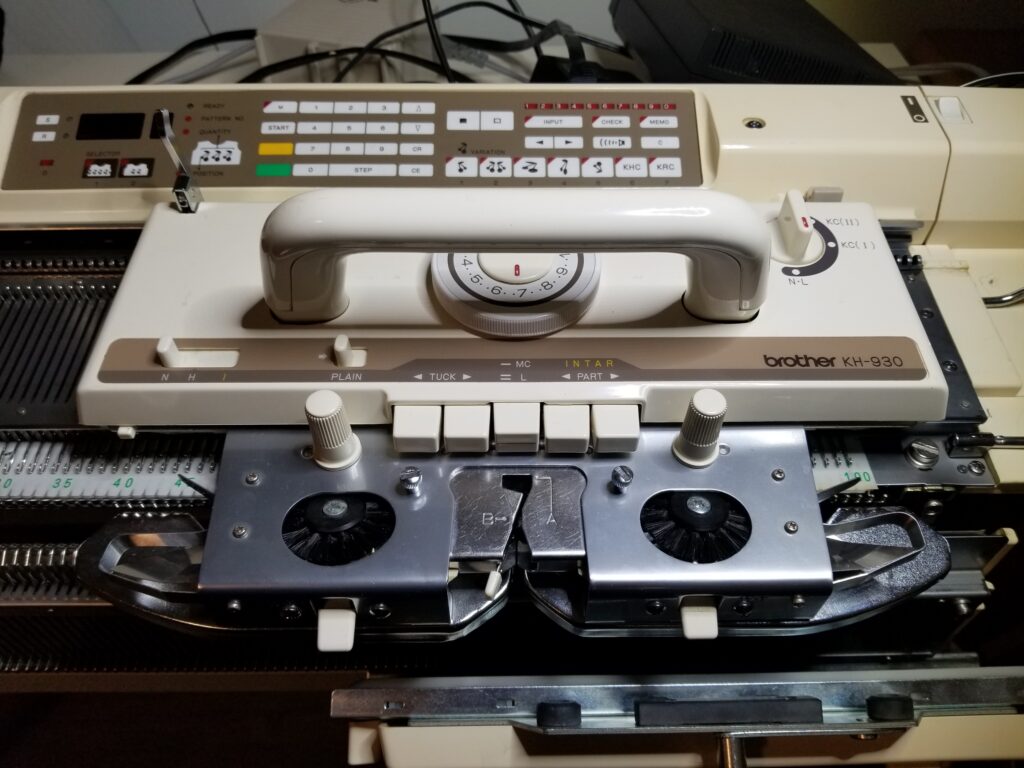
Starting with the main carriage, I removed the plastics first and washed all of those in dish soap (no it wasn’t Blue Dawn because that shit isn’t the magic potion you all think it is) and warm water. Then I spent a considerable amount of time freeing the buttons from their hardened grease and oil prison. Once everything was moving freely and correctly, I reassembled it all so I could answer the most crucial question…
Does it Knit?
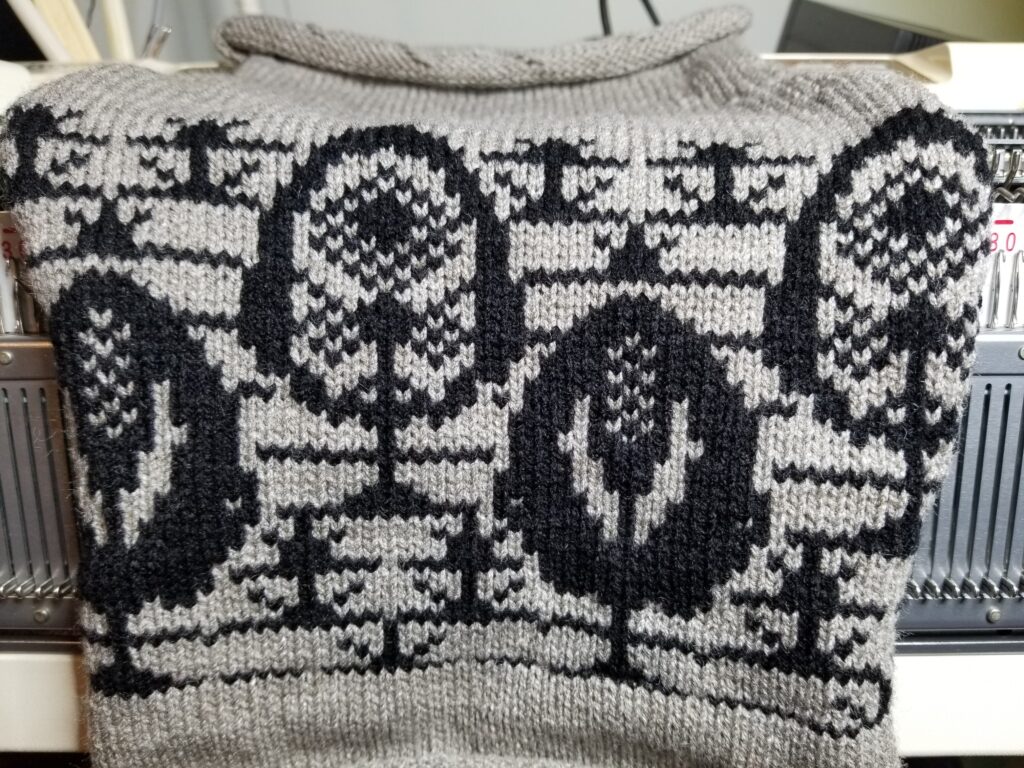
Well, yes, yes it does knit. And it knits beautifully! I knitted this sample of fair isle from one of the built-in patterns and it did not miss a stitch.
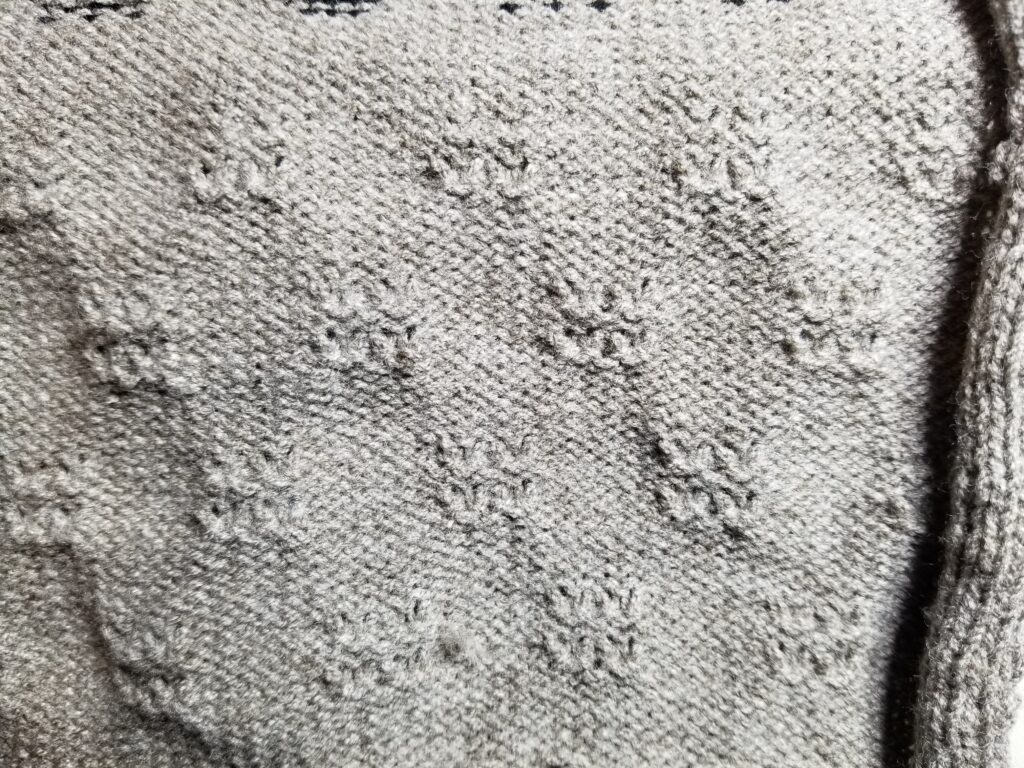
This tuck stitch sample came out beautifully. Again, I used one of the built-in stitch patterns.
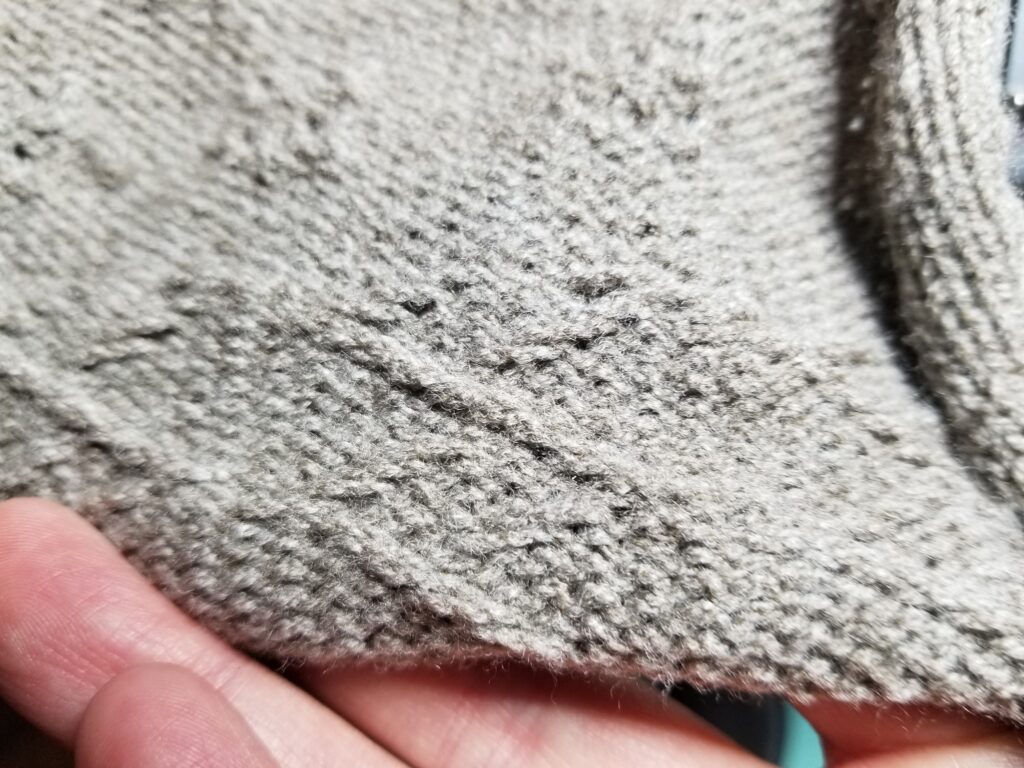
Same for this slip stitch sample.
The Ribber Carriage

Next the Ribber Carriage got the same treatment. I didn’t spend quite as much time on it, there are fewer moving parts internally so hardened grease and oil wasn’t as much of an issue. Of course the most important thing is always going to be – will it knit?
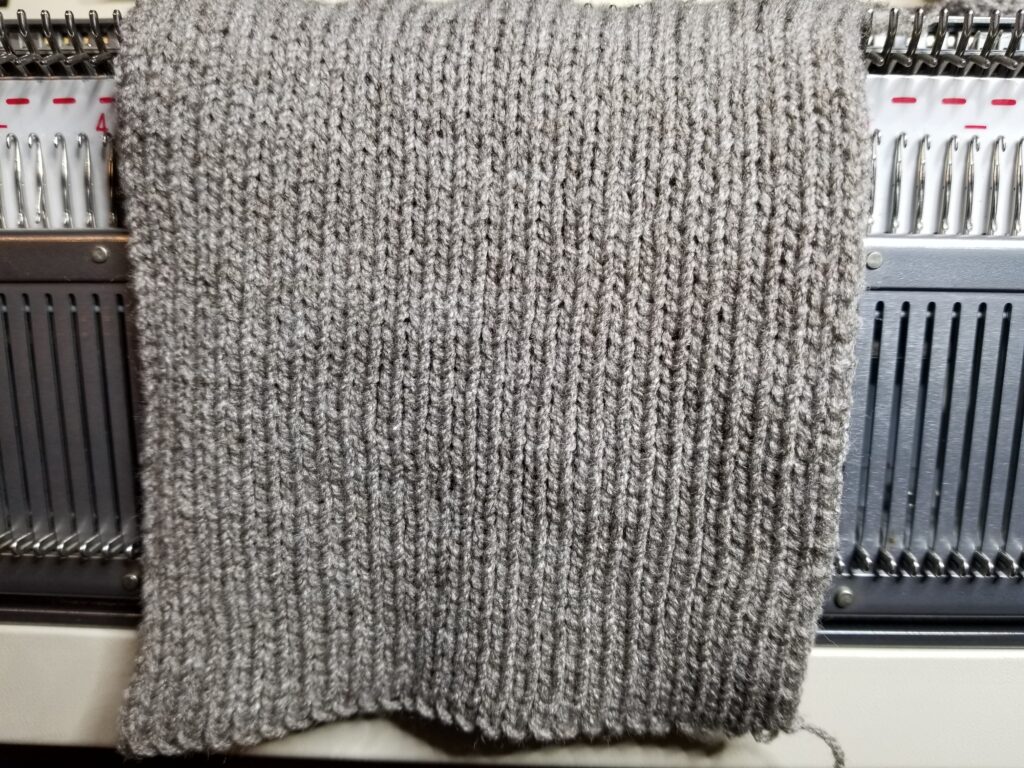
And it does knit as you can see from this 1 x 1 ribbing sample.
What’s Next?
So that just leaves the garter carriage to go over and test. Then I want to spend a little time organizing my knitting space before I choose a pattern and start knitting. Hmm, do I start with a sweater? Maybe a scarf or shawl?

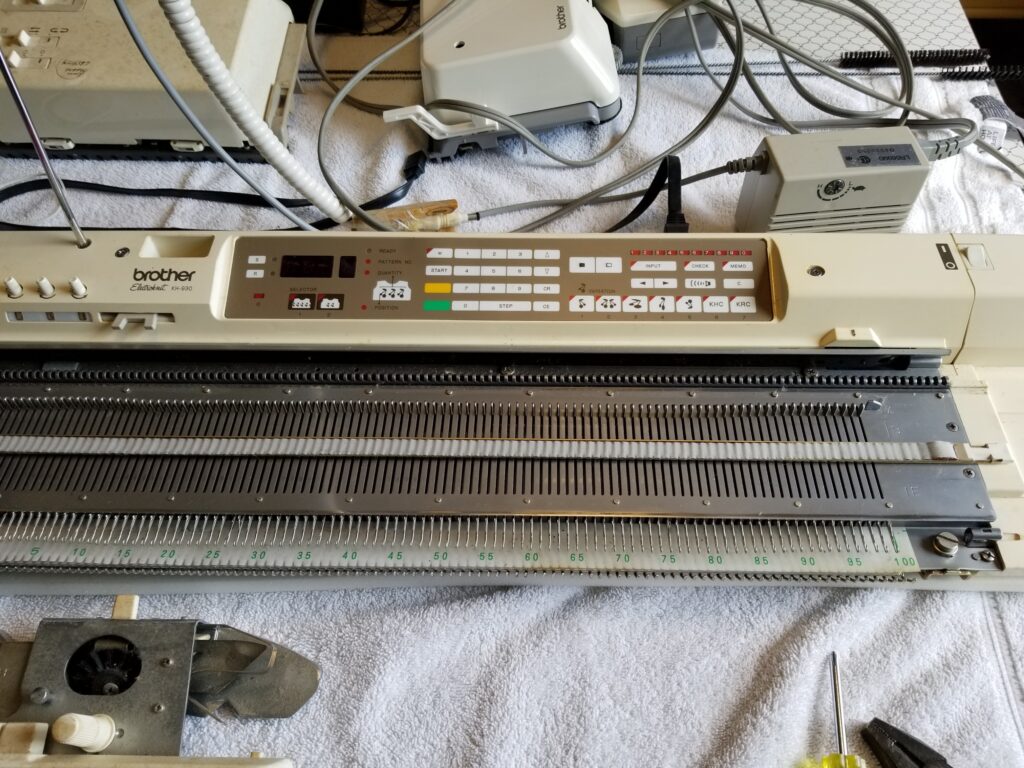 I bought another knitting machine – a Brother 930 this time. This one is an electronic machine and I am pretty excited about it! I had already bought some knitting machine yarn from the same lady, and she gave me a pretty good deal on this machine. I mean honestly, wait until you see all the goodies it came with!
I bought another knitting machine – a Brother 930 this time. This one is an electronic machine and I am pretty excited about it! I had already bought some knitting machine yarn from the same lady, and she gave me a pretty good deal on this machine. I mean honestly, wait until you see all the goodies it came with!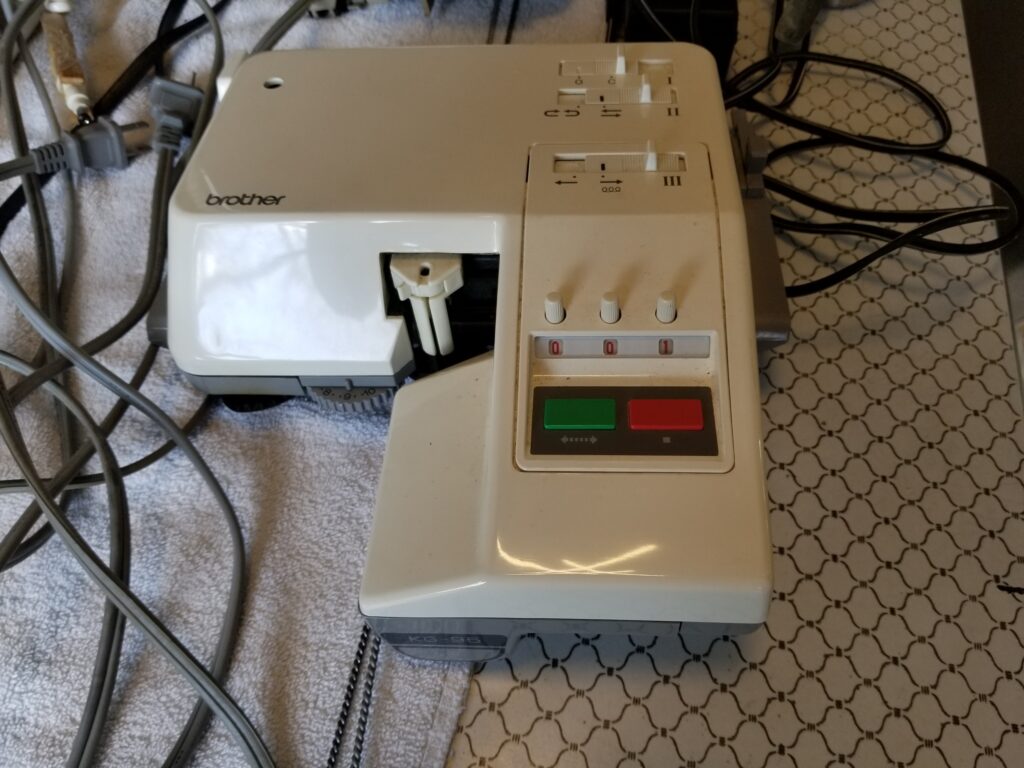
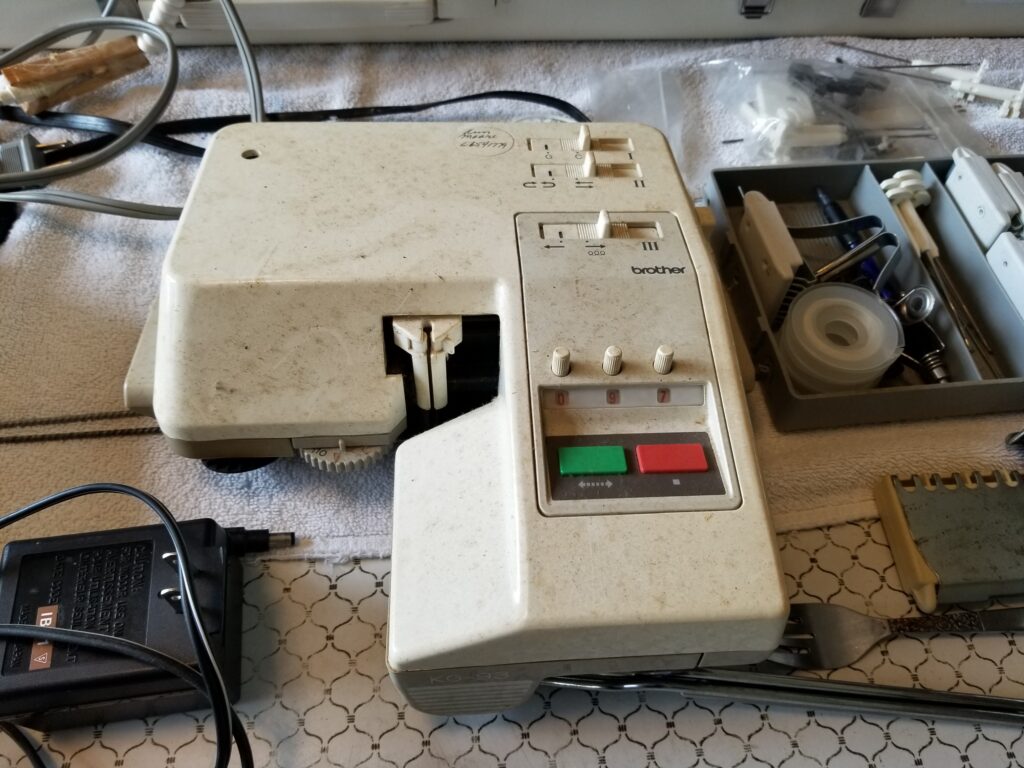
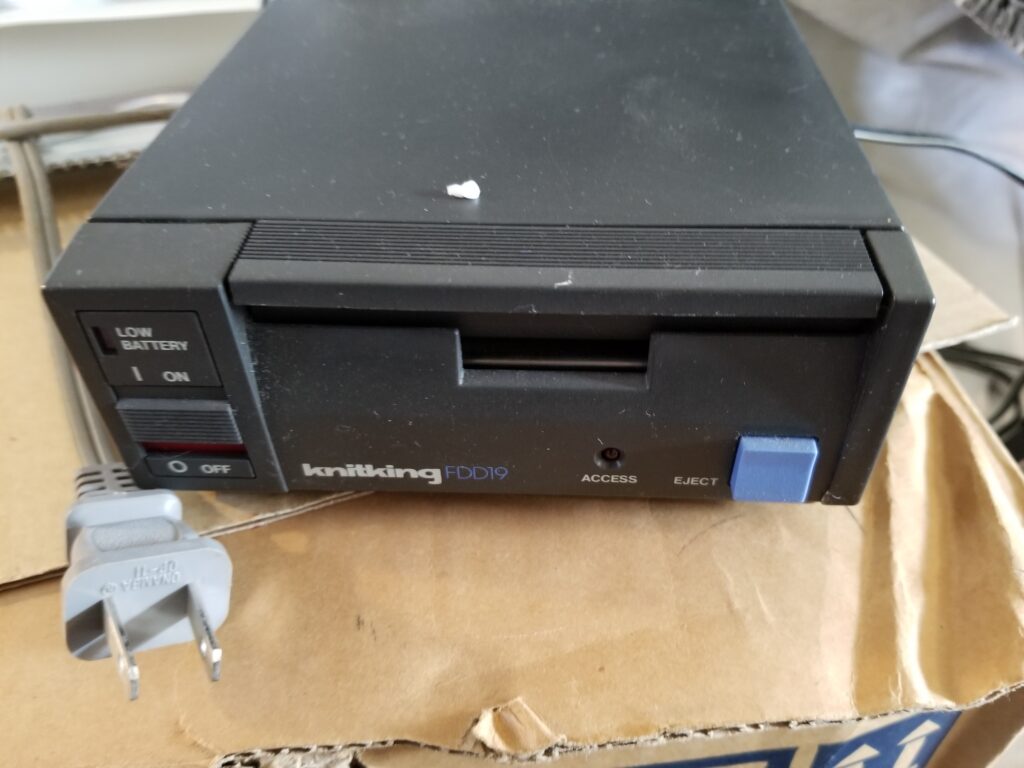
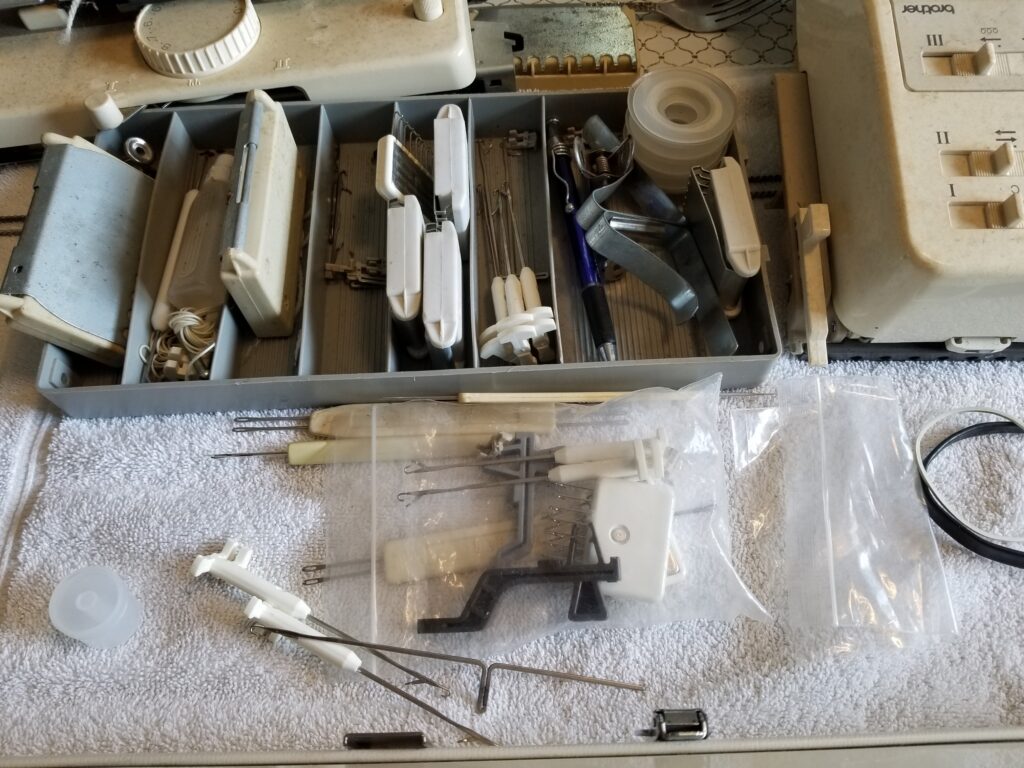
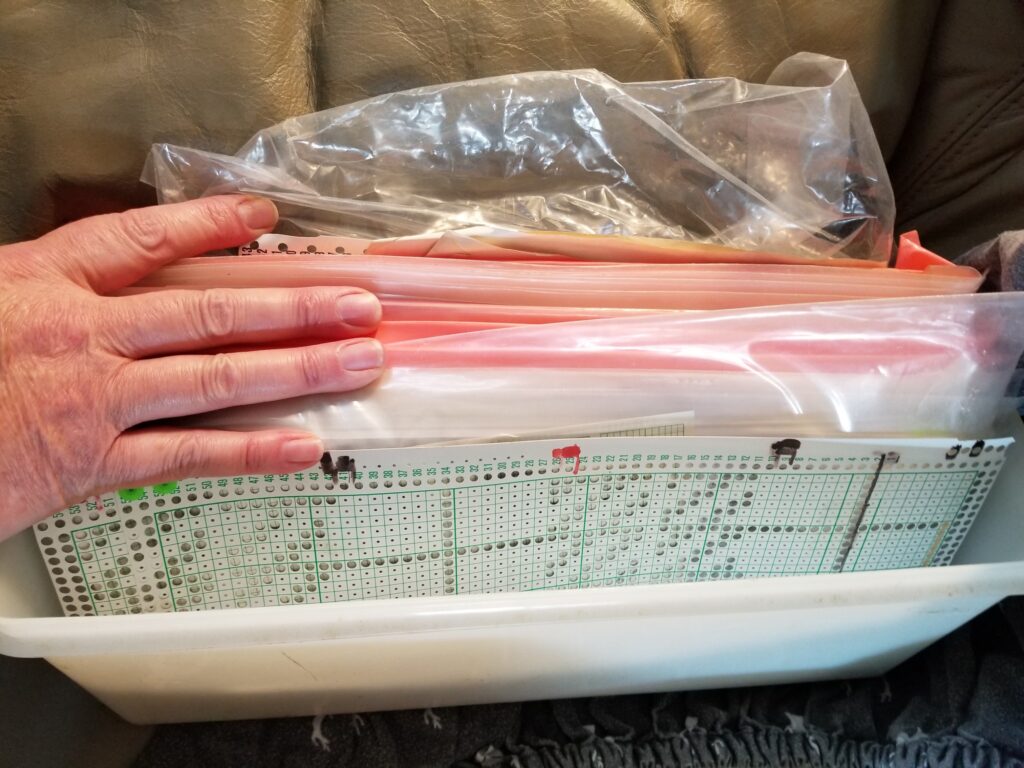
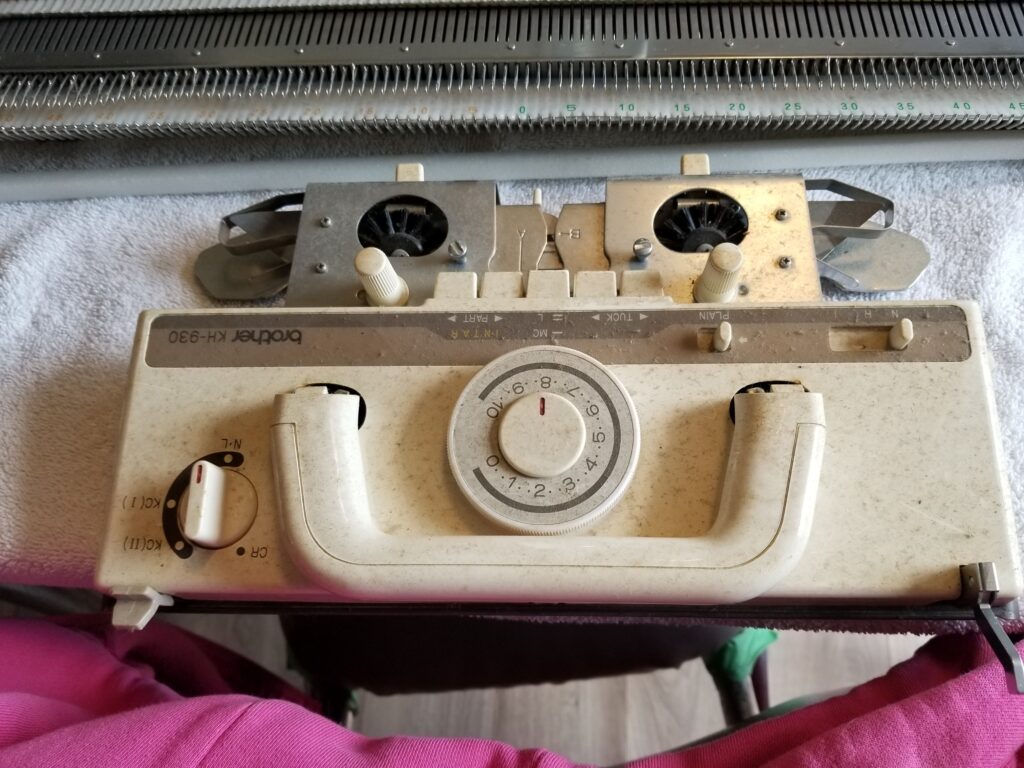
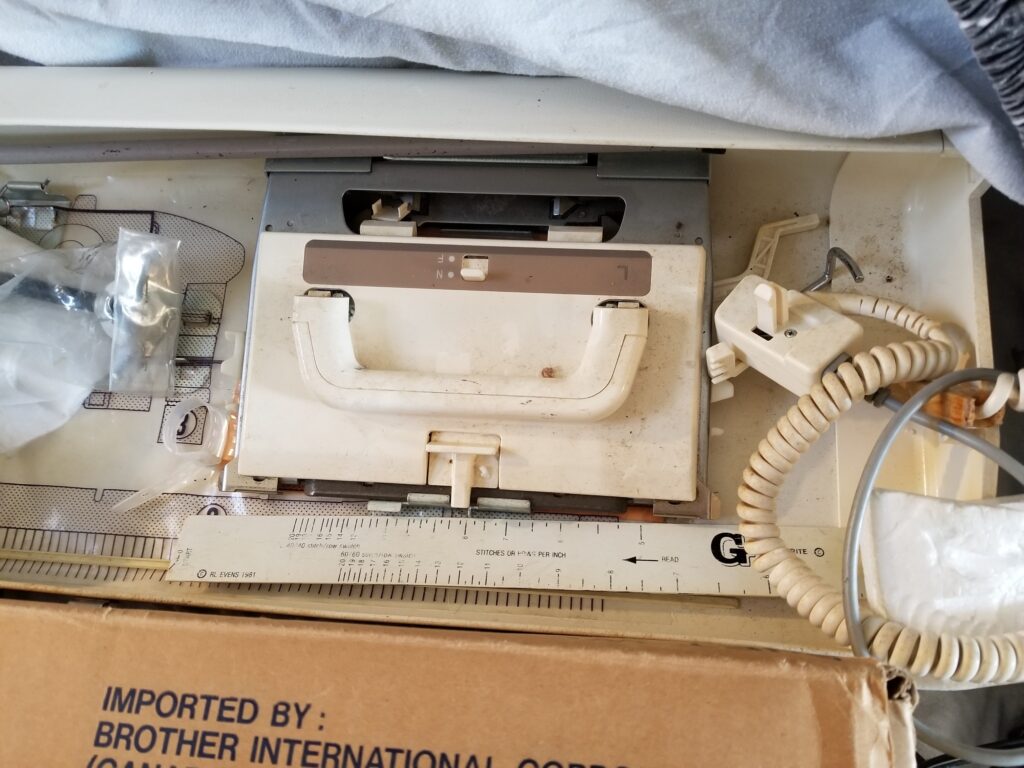
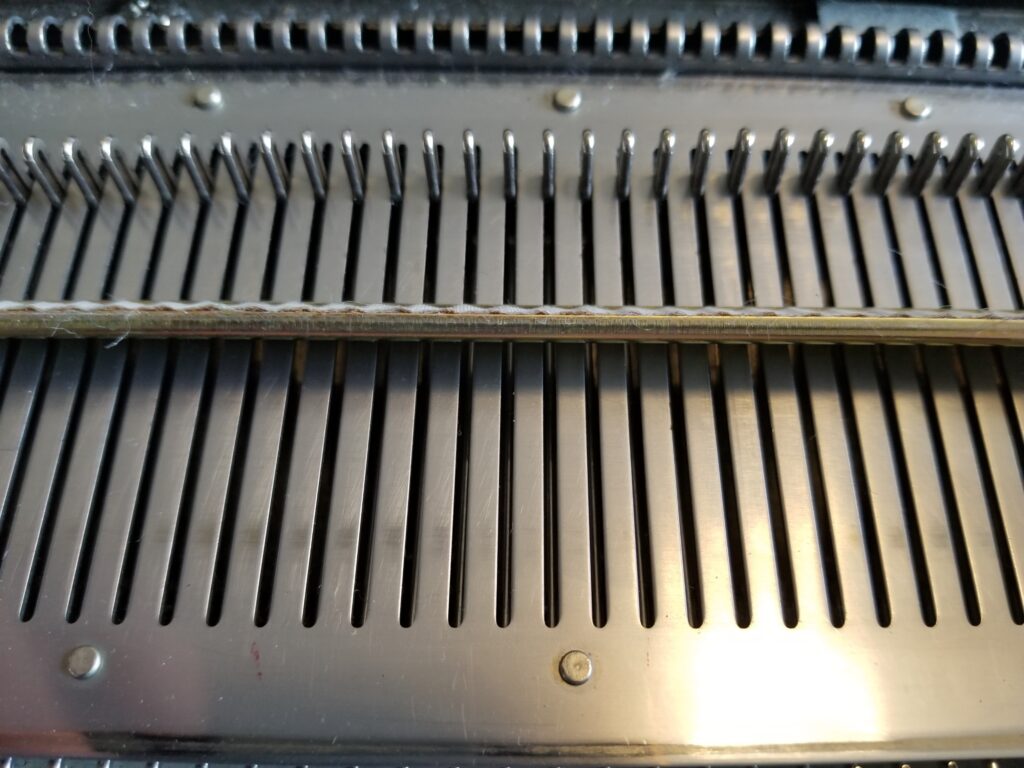
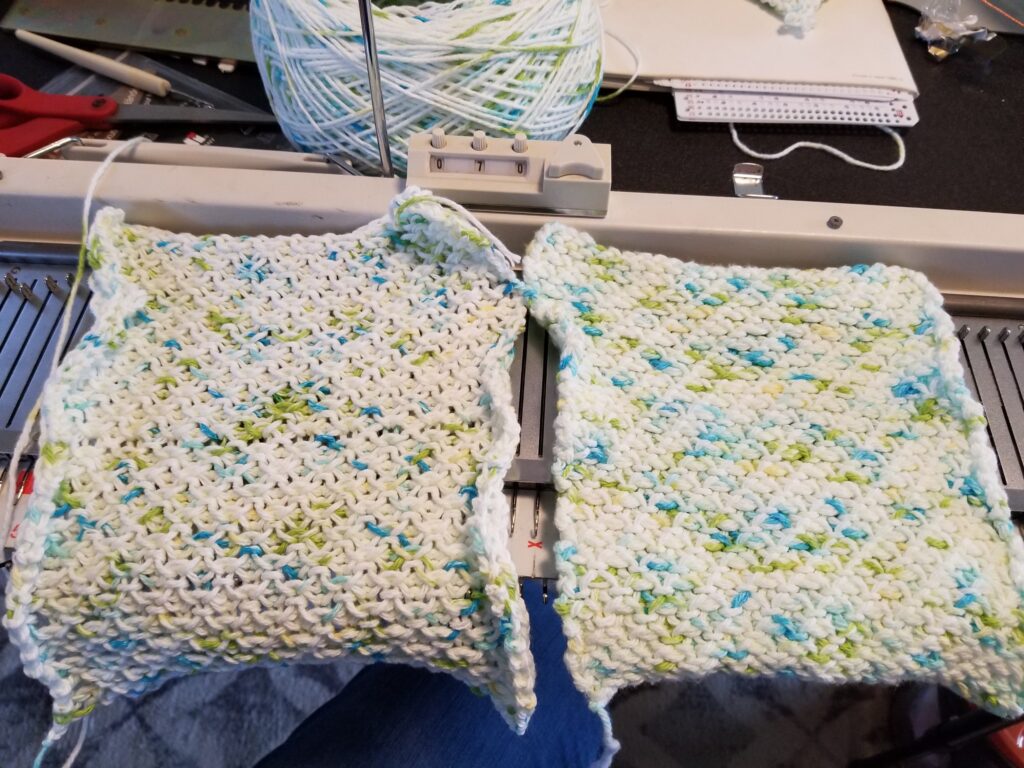
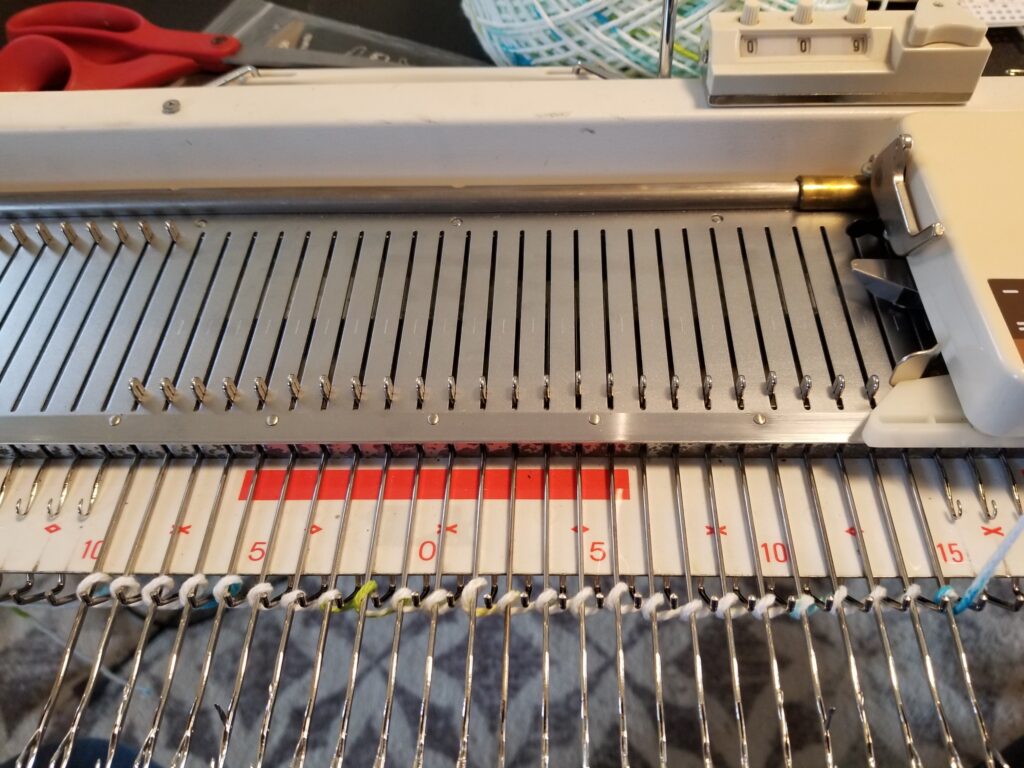 Now if you follow me on YouTube, I did a couple of videos on rehabbing my
Now if you follow me on YouTube, I did a couple of videos on rehabbing my 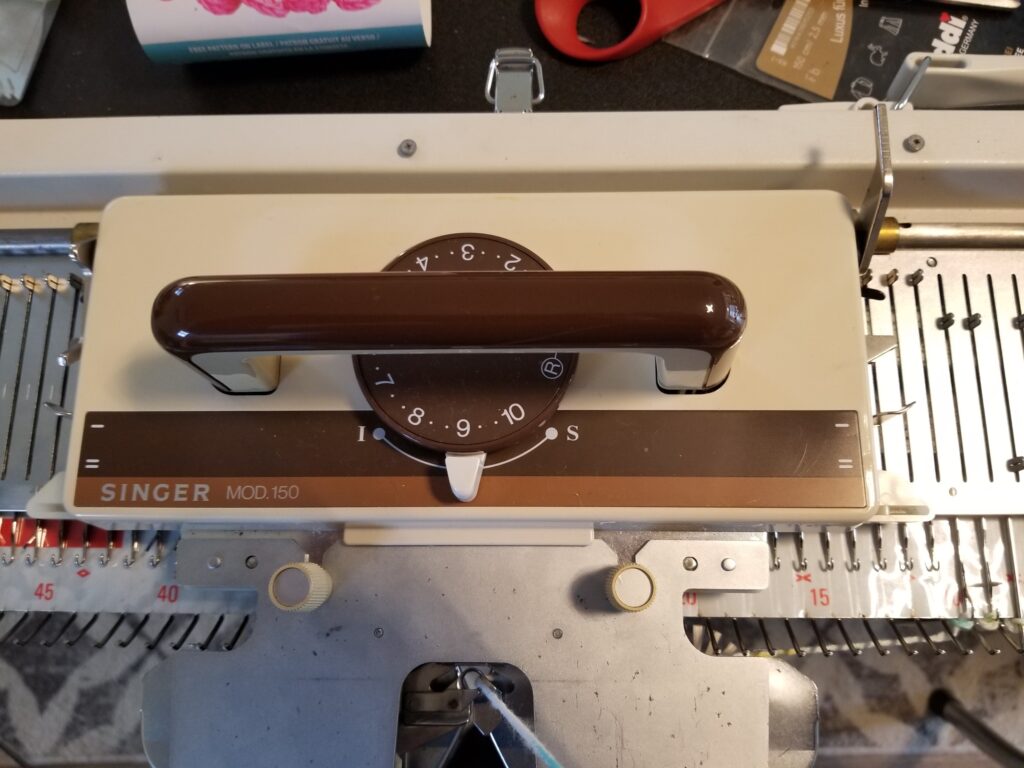 For the first row, I set my carriage to tuck stitch. For my machine that is done by setting the Russell Levers at the sides of the carriage to position ‘-‘ instead of ‘=’. Set the stitch selector to stockinette. On my machine, tension 9 is a good stitch size. Keep in mind the yarn shrinks in the wash which can make the cloth feel more like a pot holder than a dish cloth if the stitch size is too small. You can see how much the washed dishcloth on the right of the first picture shrunk compared to the just knitted cloth on the left.
For the first row, I set my carriage to tuck stitch. For my machine that is done by setting the Russell Levers at the sides of the carriage to position ‘-‘ instead of ‘=’. Set the stitch selector to stockinette. On my machine, tension 9 is a good stitch size. Keep in mind the yarn shrinks in the wash which can make the cloth feel more like a pot holder than a dish cloth if the stitch size is too small. You can see how much the washed dishcloth on the right of the first picture shrunk compared to the just knitted cloth on the left.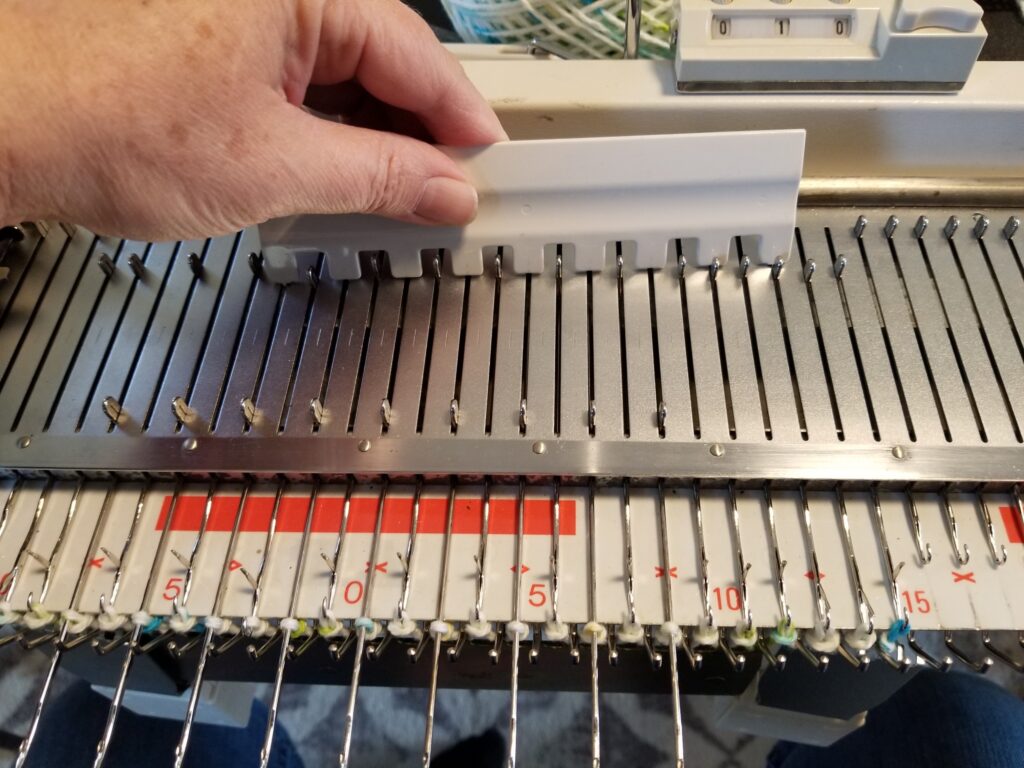 Next leaving the first 2 needles in working position, I pull every other needle out to ‘hold’.
Next leaving the first 2 needles in working position, I pull every other needle out to ‘hold’.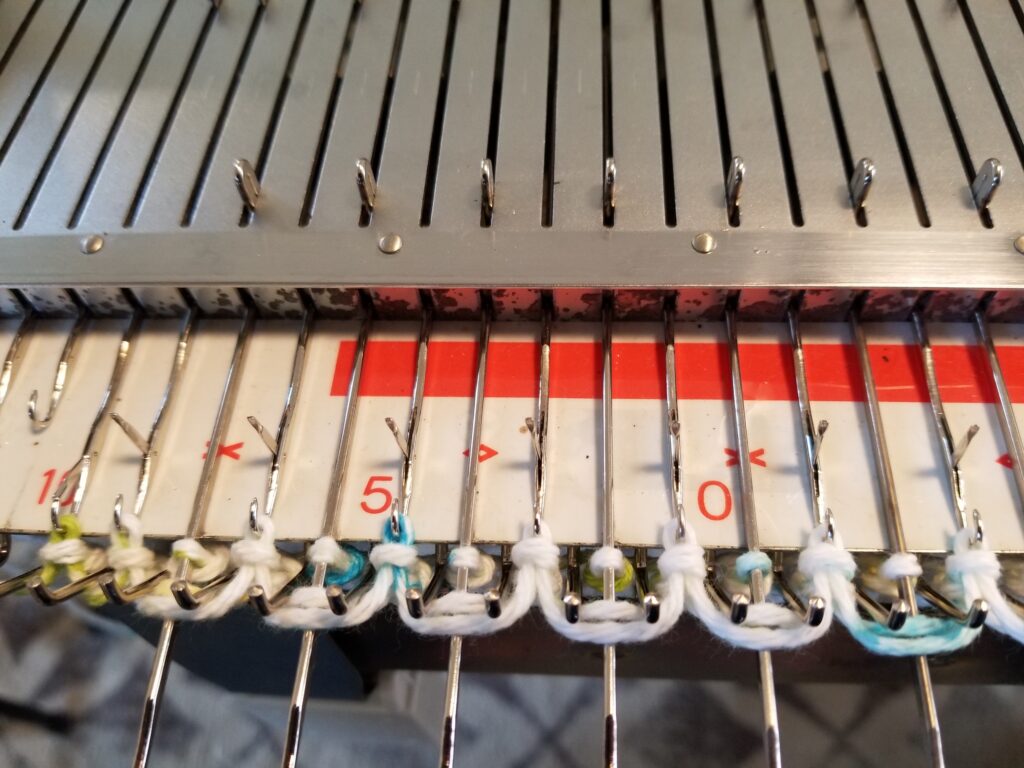
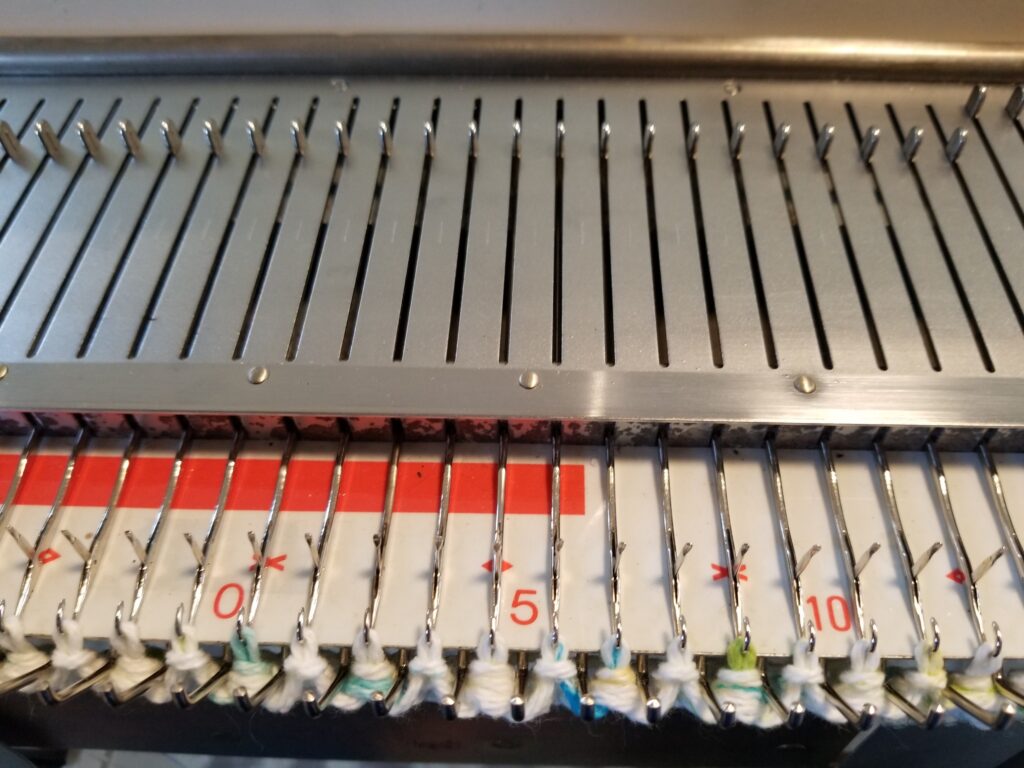
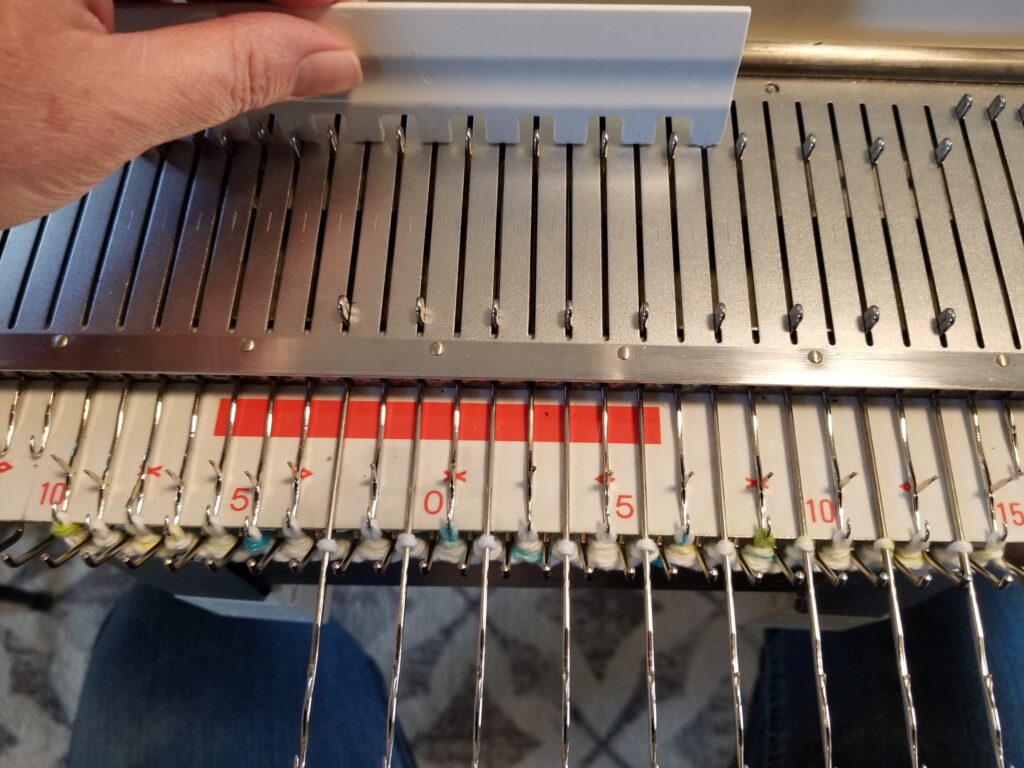
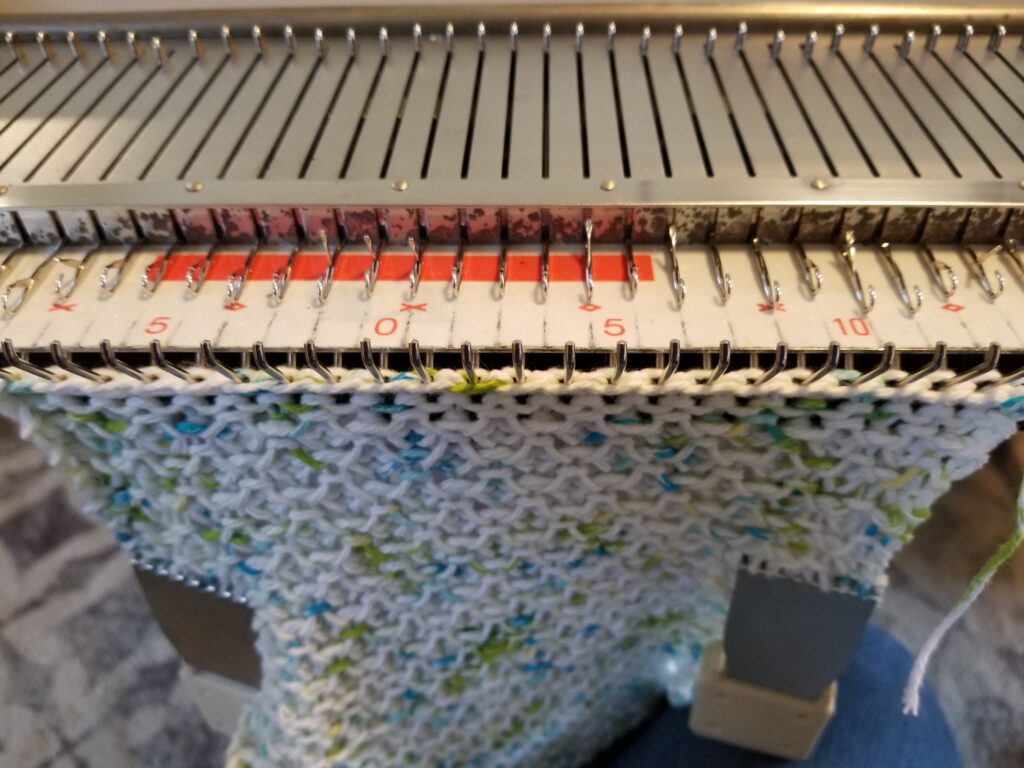 I continue on in the pattern until my row counter is around 70. Then I bind off after the last row of all needles knit.
I continue on in the pattern until my row counter is around 70. Then I bind off after the last row of all needles knit.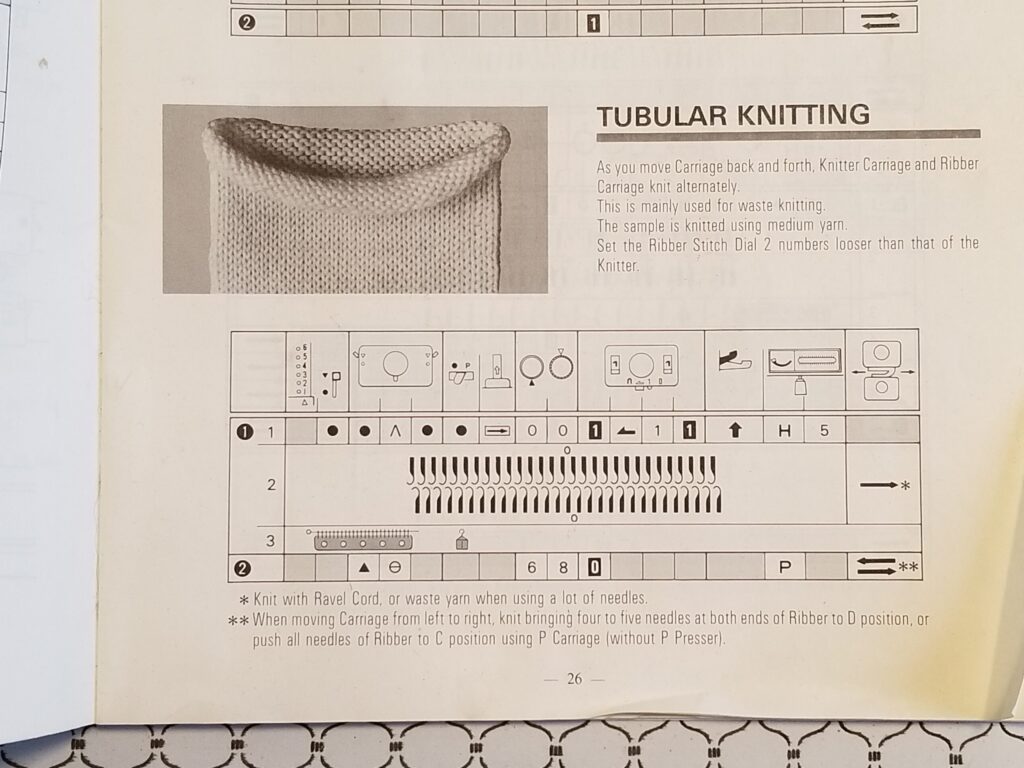 Here are the instructions as they appear in my manual. It’s all there but as new machine knitter I certainly didn’t understand it. So here is what you need to do.
Here are the instructions as they appear in my manual. It’s all there but as new machine knitter I certainly didn’t understand it. So here is what you need to do.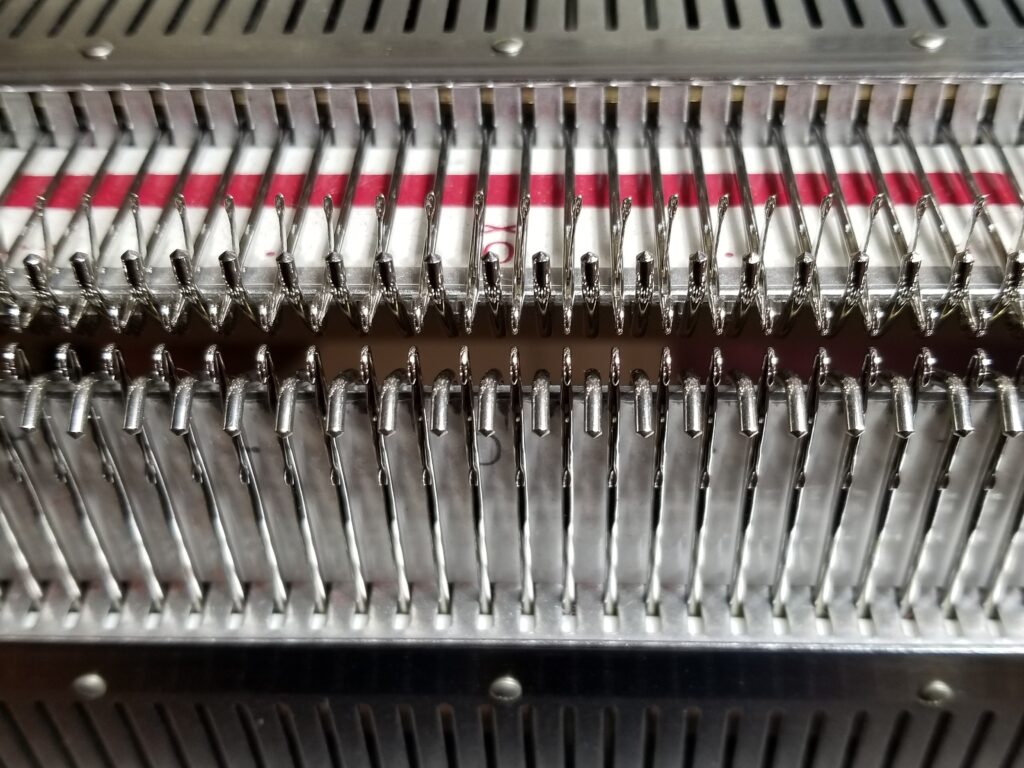
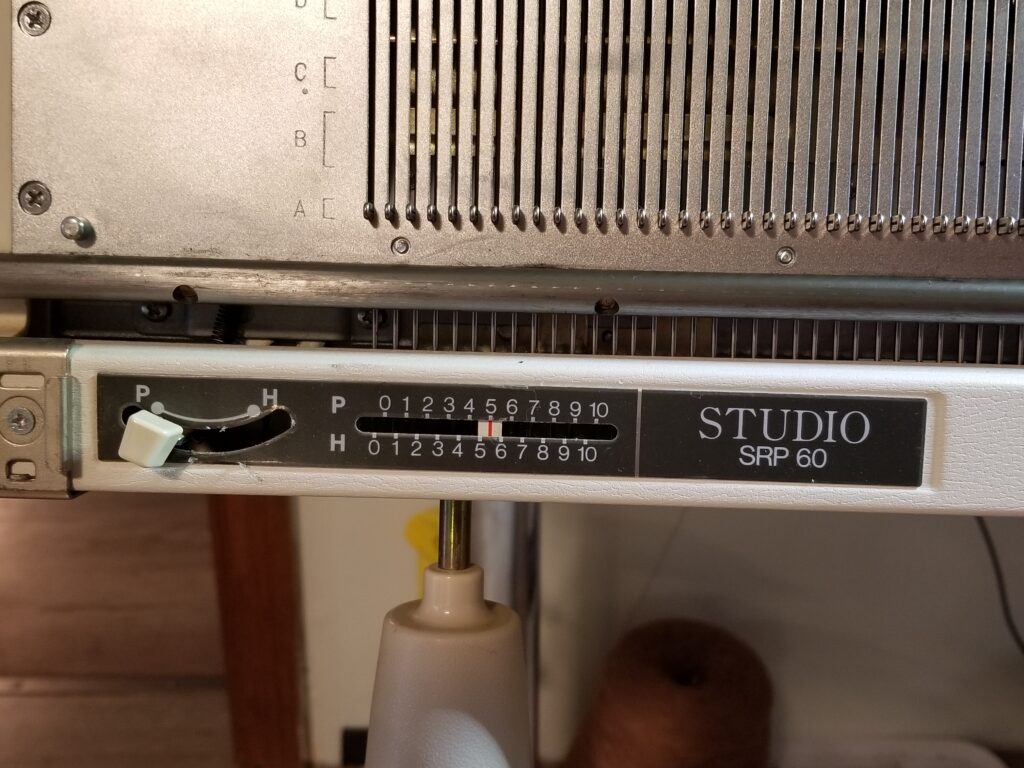
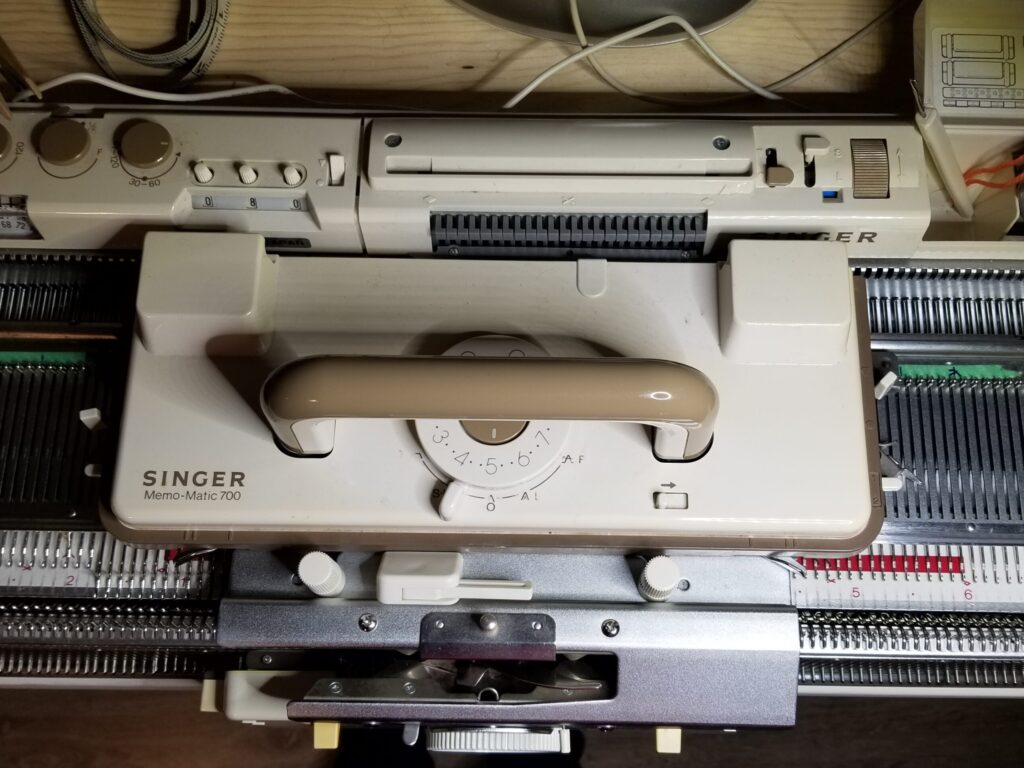
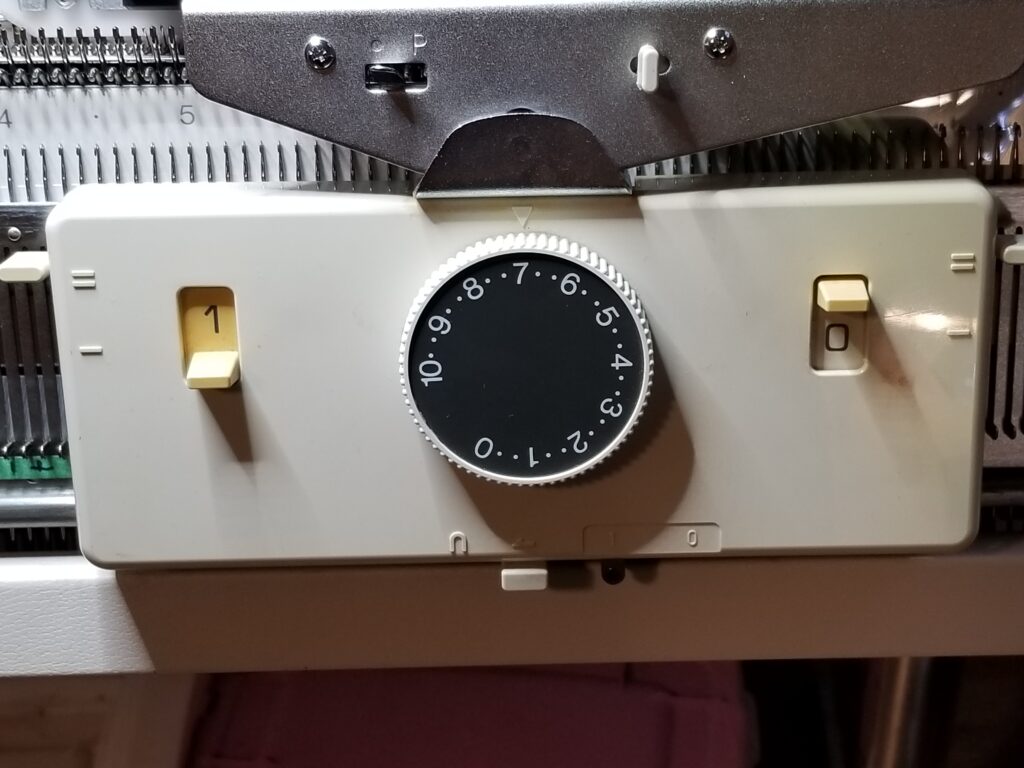

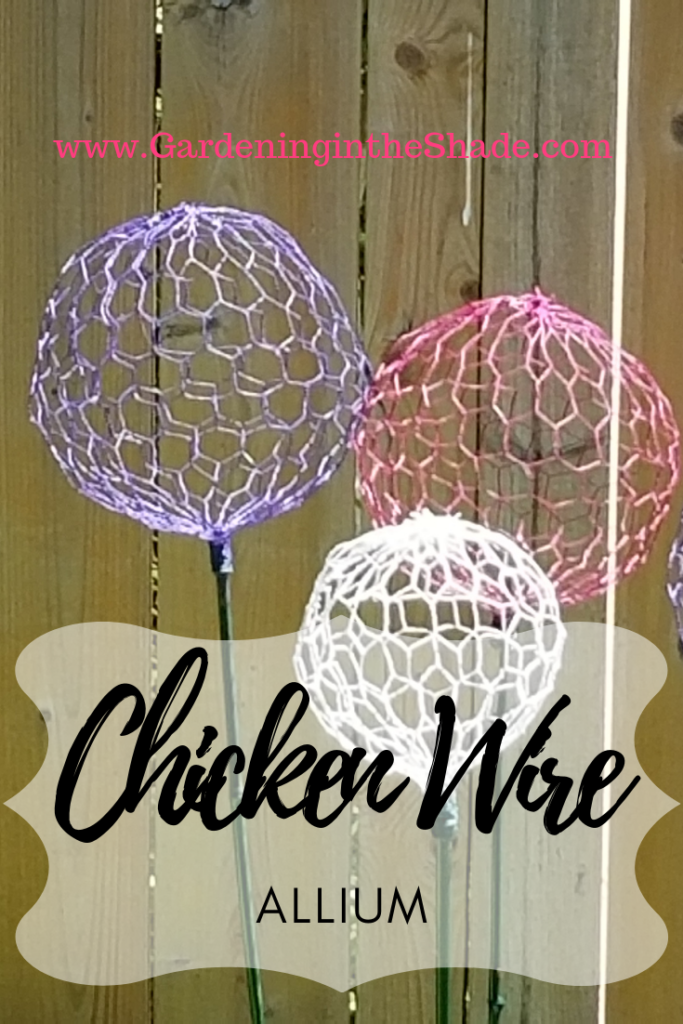
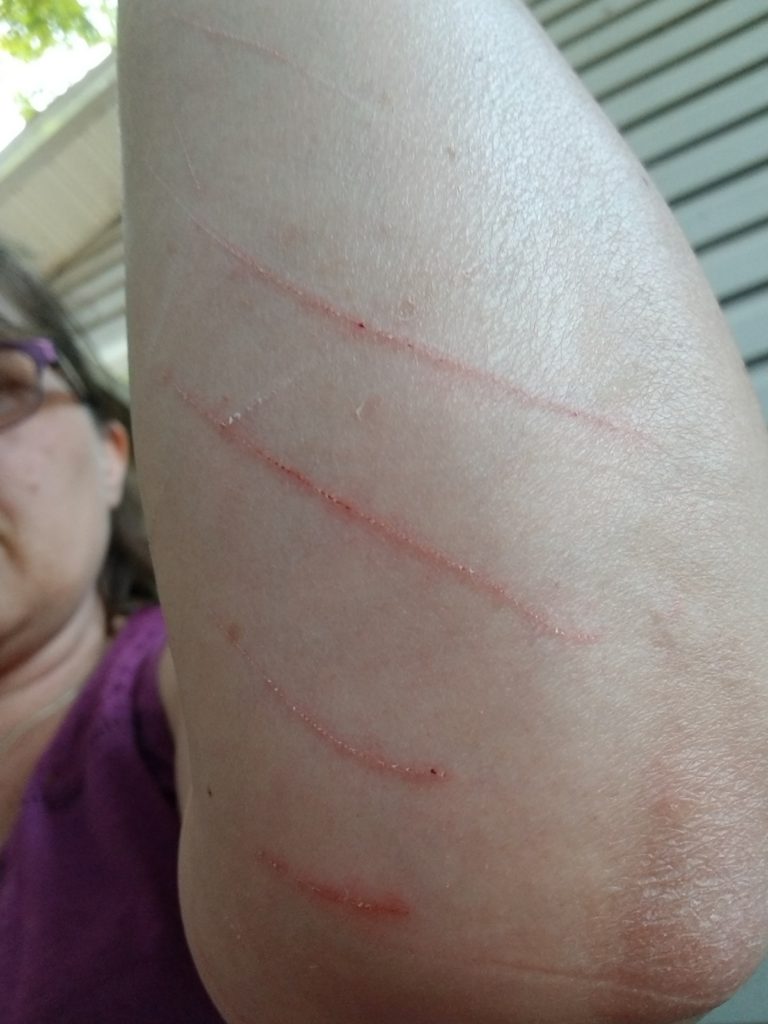
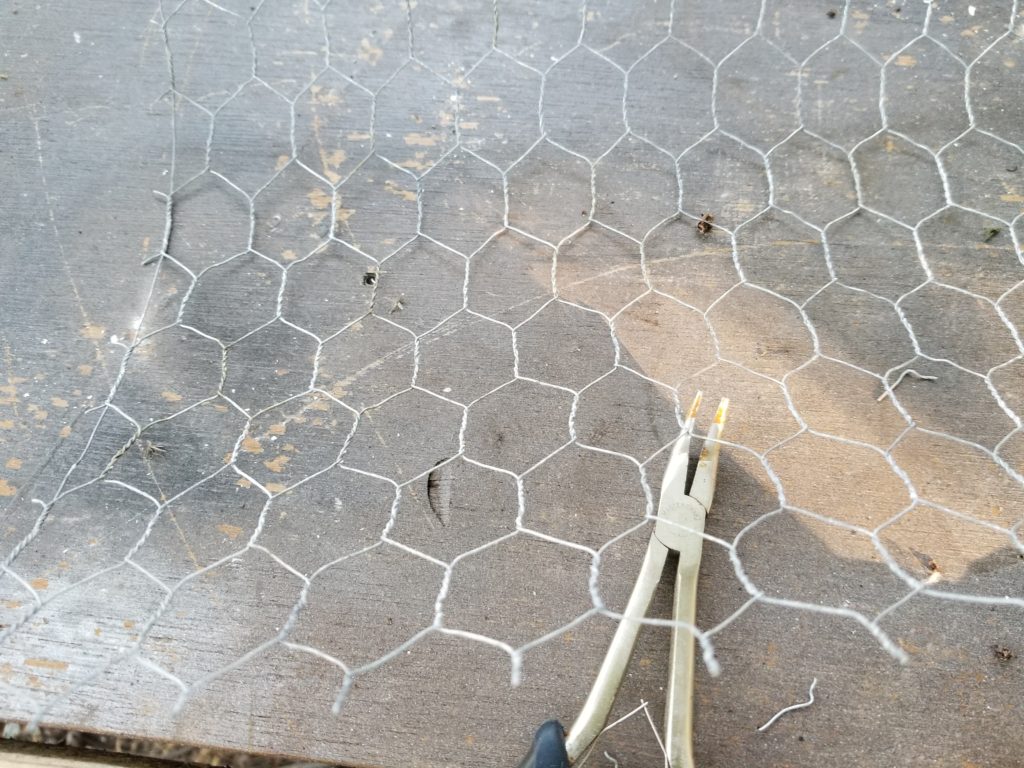 After some trial and error, I found I got the best results with the chicken wire oriented as above. The twisty parts need to be running up and down.
After some trial and error, I found I got the best results with the chicken wire oriented as above. The twisty parts need to be running up and down.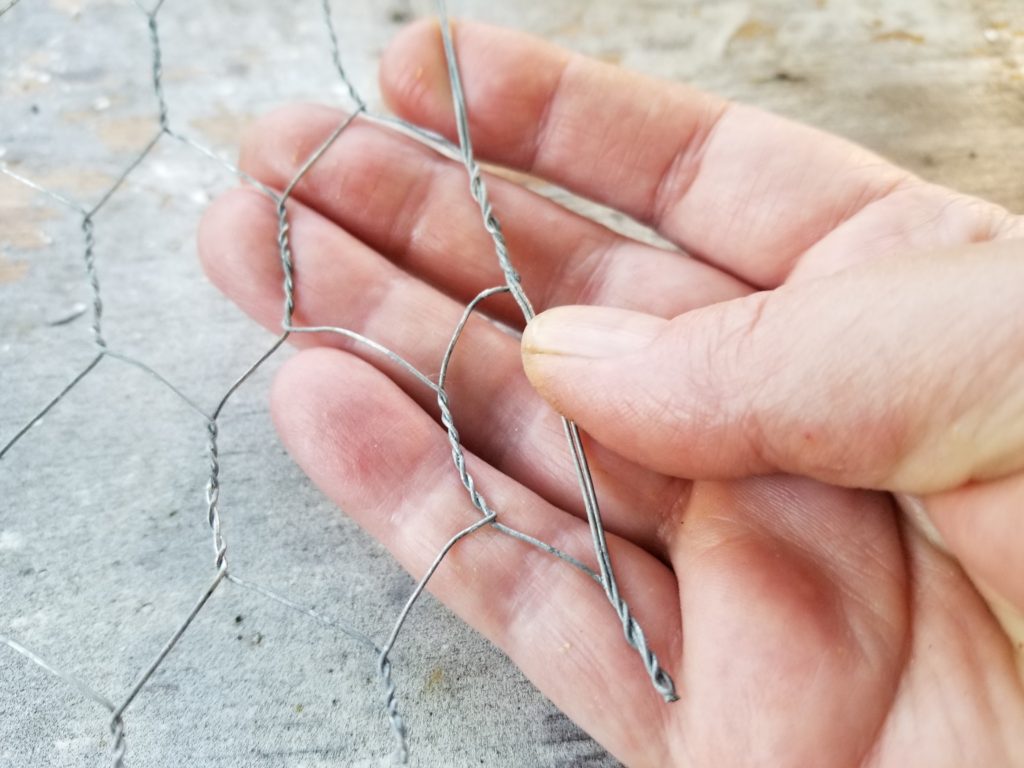
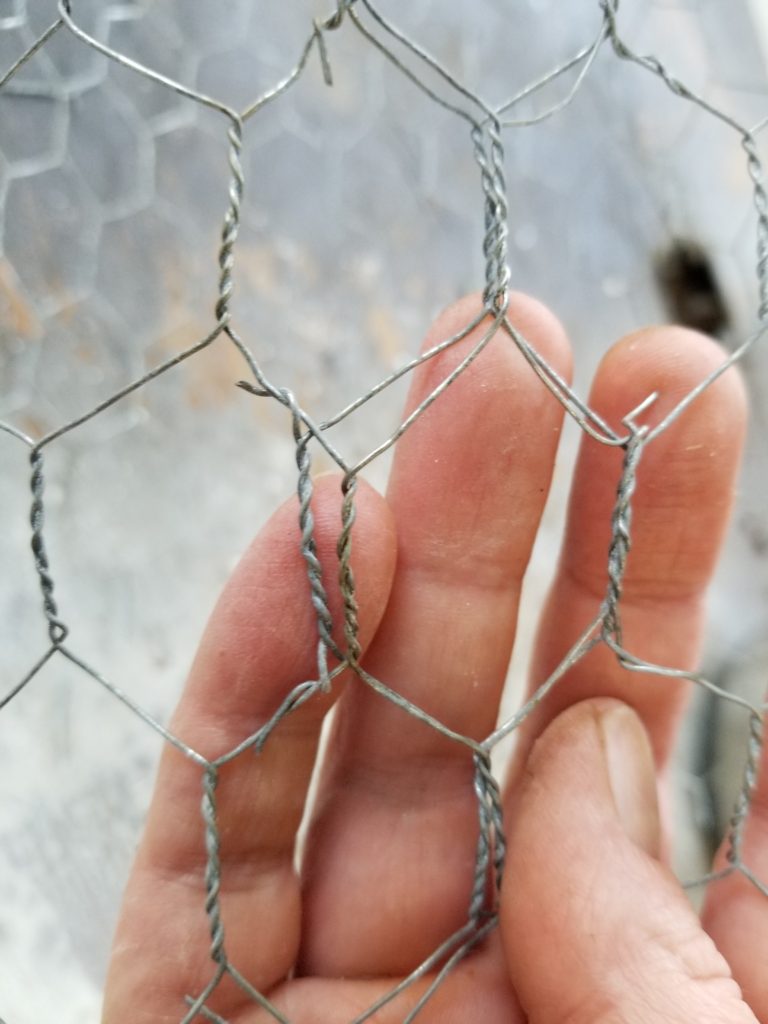
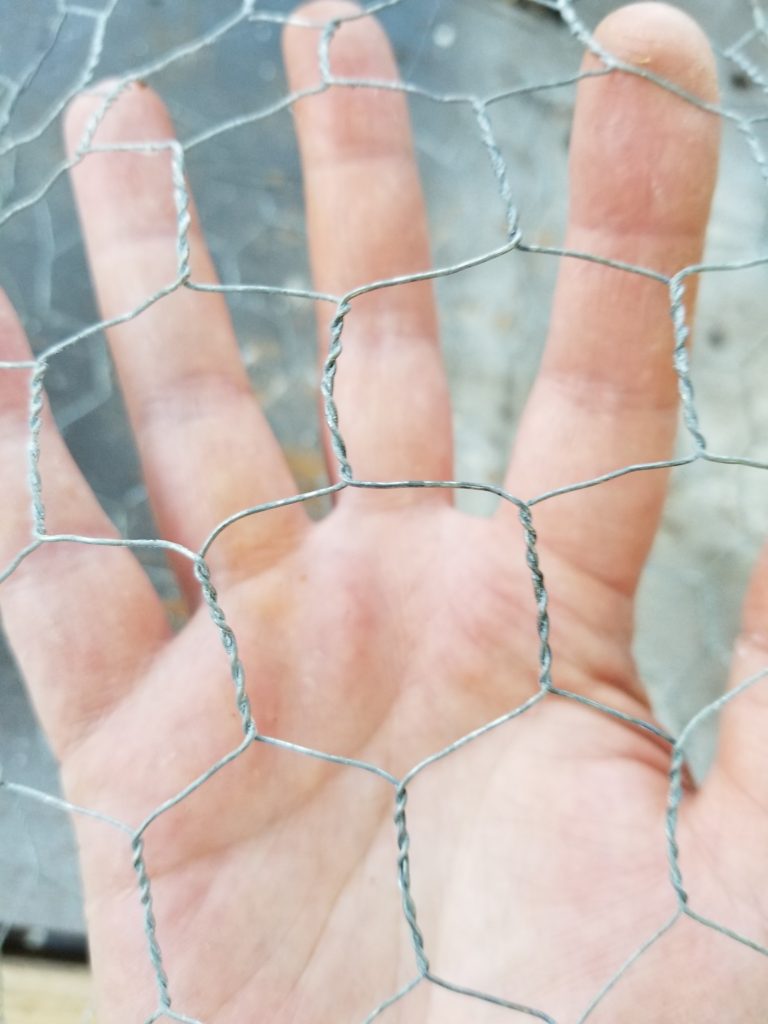
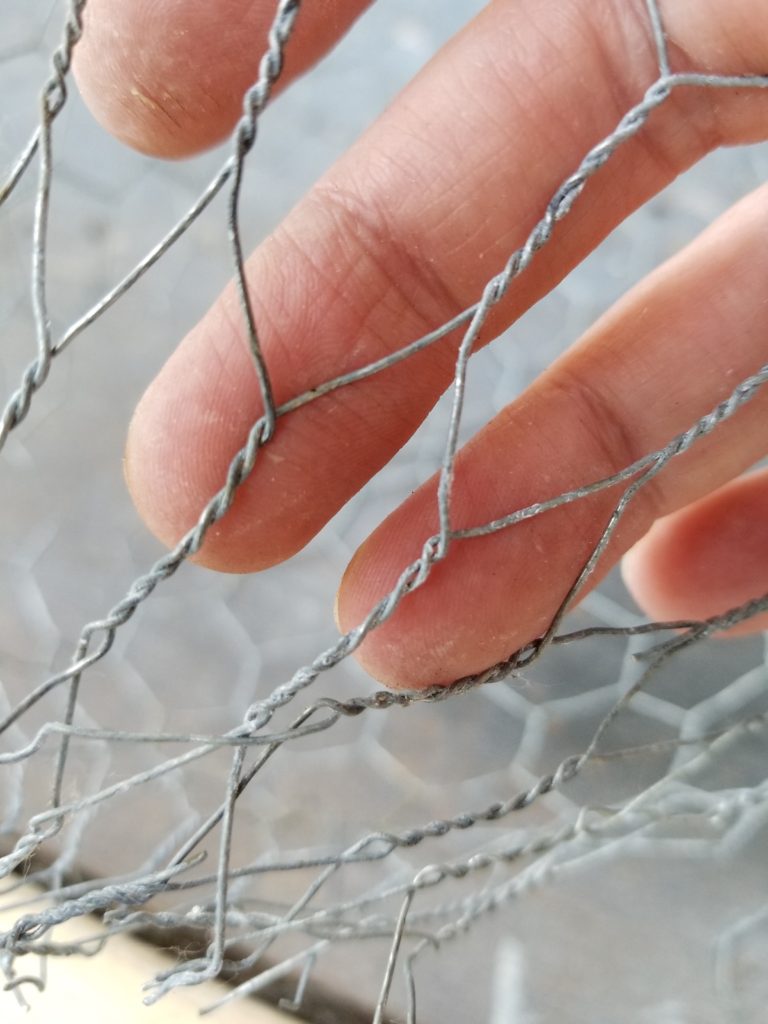
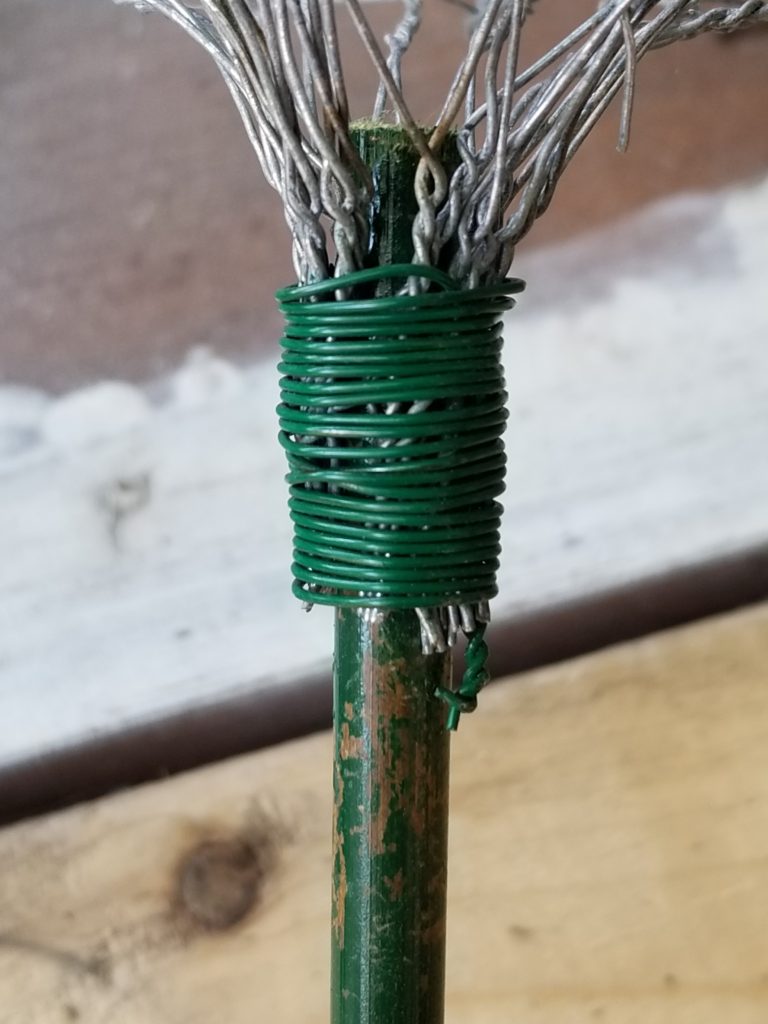

 Pick a spot and shove the stakes in the ground to arrange your Chicken Wire Allium any way that makes you happy!
Pick a spot and shove the stakes in the ground to arrange your Chicken Wire Allium any way that makes you happy!